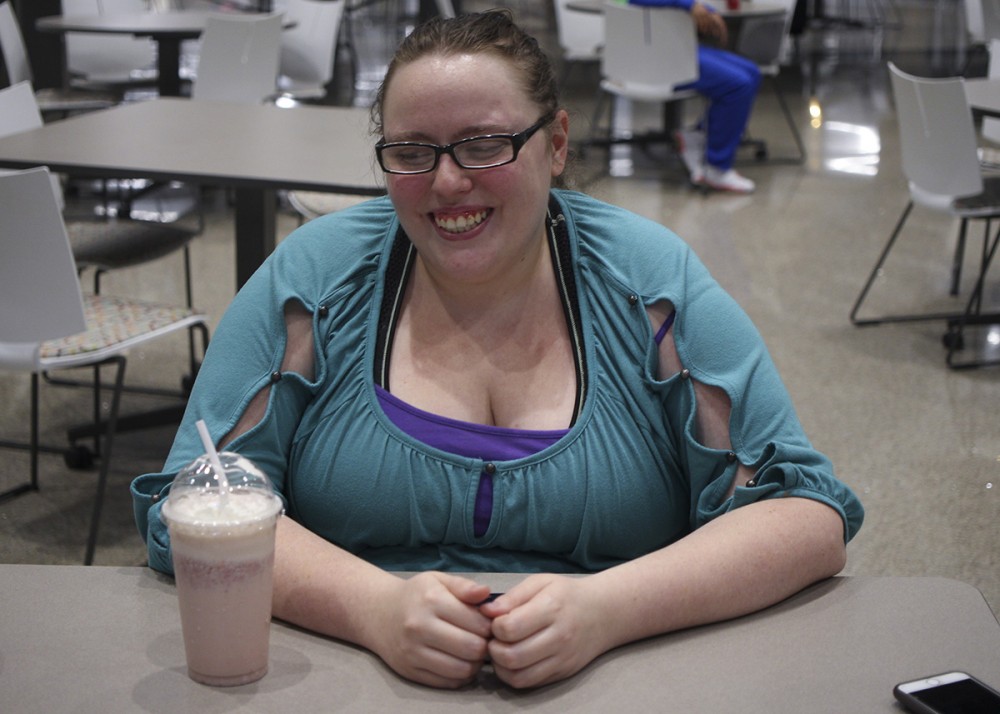She shoves the tote back under her bed, walks over to her desk and opens a small wooden jewelry box. Her class ring sits in the bottom drawer — a silver band and a tiny red gem. Her mom’s credit card payment for the ring went through the day she died. Most of the stability in Nicole’s life ended that day.
Nicole’s mom had been sick, and at 7:30 p.m. Dec. 3, 2012, she flat-lined. Nicole let go of her hand for the last time, ran out of the hospital and fell in the parking lot, not sure what would happen next.
The courts sent her and her brother to live with their father, who hadn’t been around much.
He charged them rent, and Nicole couldn’t afford it. She was left with nowhere to stay until her guidance counselor at Crawford County High School stepped in. The counselor helped her find families who could take her in until she would start at Vincennes University.
Fourteen percent of community college students across the country are homeless, but it’s not just a community college problem. Nicole is homeless, too. She lives with a roommate in the Vanderburgh residence hall, but when school is out, she has nowhere to go.
 Now a junior, Nicole attends Vincennes University. She pays for food and housing with student financial aid and what she makes working at Tecumseh Dining Center, but she still worries about having enough money to pay for school. As a homeless student, Nicole has no certain place to stay during scheduled breaks when the dorms are closed.
Now a junior, Nicole attends Vincennes University. She pays for food and housing with student financial aid and what she makes working at Tecumseh Dining Center, but she still worries about having enough money to pay for school. As a homeless student, Nicole has no certain place to stay during scheduled breaks when the dorms are closed.
Cindy Knowles is the director of counseling at Crawford County High School who helped Nicole get back on her feet. Crawford is one of the five lowest-income counties in Indiana. Knowles sees about two identified homeless students graduate in each class of about 100.
For all of those students, navigating college and financial aid is confusing. Some can afford to not understand it. Students like Nicole cannot.
“When people think homelessness, they think on the street, in boxes or in a shelter, but that’s not always the case,” Knowles said.
Students might be sleeping in cars, with their friends’ families or with a rotation of family members.

At any point — a breakup, an argument, a missed paycheck — their housing could fall through, and they could be left on the street.
The year after Nicole graduated, Knowles saw another student, Khylee Williams, graduate with no clue where to go next.
Khylee spent most of her life floating from home to home as her parents abused drugs and drifted in and out of jail. She moved five times between 7th and 12th grades. Relatives would let her stay with them for a while, and then she would move in with her boyfriend or with friends.
Khylee wanted to be a paramedic, and she tried to go to Ivy Tech, but the financial aid process stopped her.
When Khylee tried to fill out the Free Application for Federal Student Aid in 2015, a nightmarish process for any student, she saw it required her to show her tax return from that year.
The form has about 130 questions to calculate adjusted gross income and the expected family contribution. It takes about an hour to complete for the first time, even with all the documents handy.
Khylee moved so often that the address under which she filed her taxes got mixed up. Without submitting her FAFSA, her only option was to take out about $16,000 in student loans -- money she wasn’t sure she would be able to pay back.
Knowles offered to help her figure out the right tax information, but navigating the system was so frustrating that Khylee gave up.
Dave Murray, president of the National Center for College Costs, helps students at Crawford County High School's FAFSA Day. Murray started the NCCC in 1999 and has worked with many homeless students over the years.
This fall, Khylee set up a meeting with Knowles to try again. But two days before their meeting, Khylee’s car broke down.
She’d just finished a Sunday night shift as a server and hostess at the Overlook Restaurant in Leavenworth, Indiana, and when she went to start her car, nothing happened.
Her gold 1999 Chrysler Concorde had a cracked head gasket, coolant leaking everywhere and bad brake rotors. Her only option was to dump her car and get a new one, but she would have to wait until spring for her tax refund or until she got a raise at work. Until then, she had to rely on her boyfriend and coworkers for rides.
She was standing in the parking lot trying to call anyone she could for help when it all hit her. She couldn’t make the meeting with Knowles. She was back where she started.
But by Thanksgiving, Khylee had found a one-bedroom home with her boyfriend. It was affordable and available and what she called the perfect little start.
Khylee still plans to go to school for paramedic science, once her car is fixed.
"I'm slowly getting there, but things are working out," Khylee said. "Things are looking up, and I think it's my time to shine."